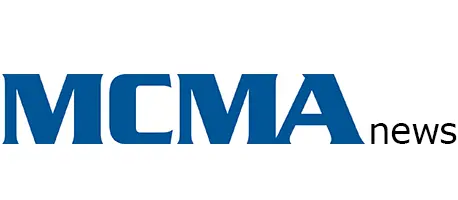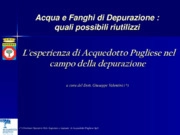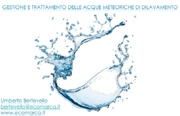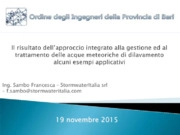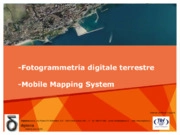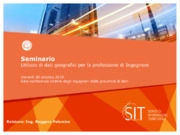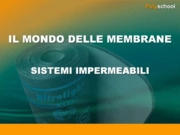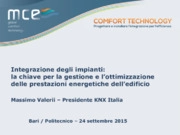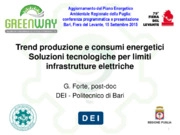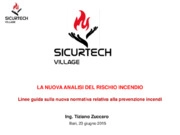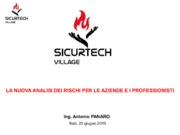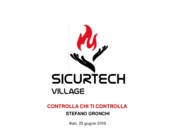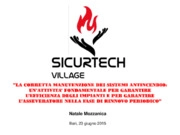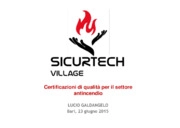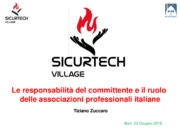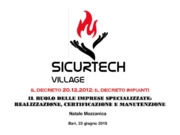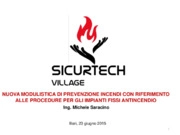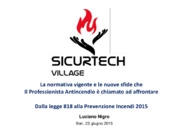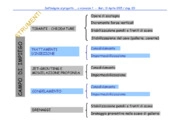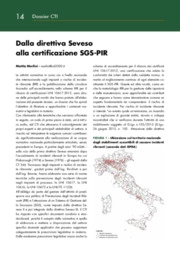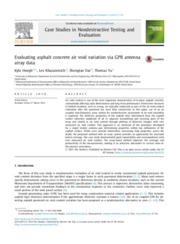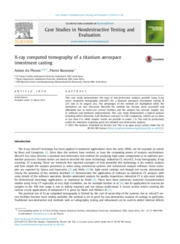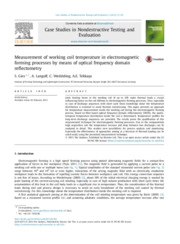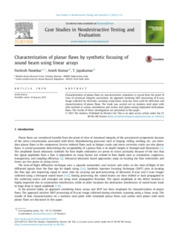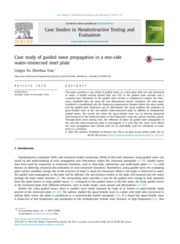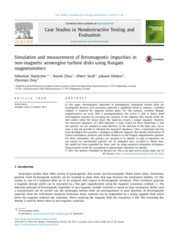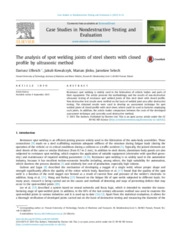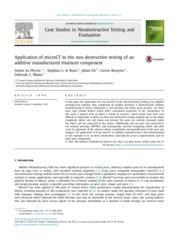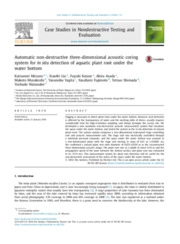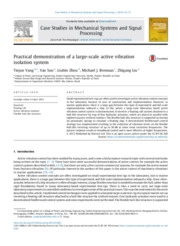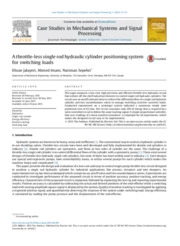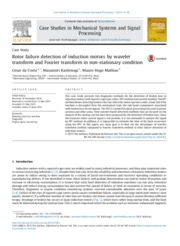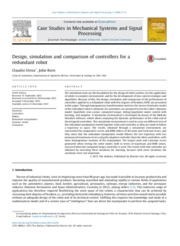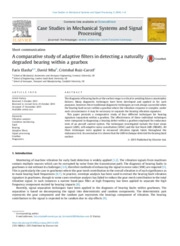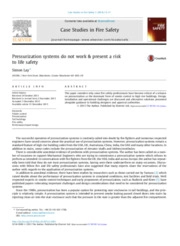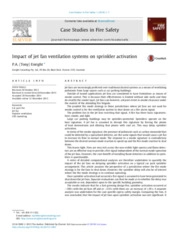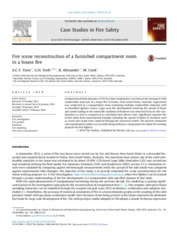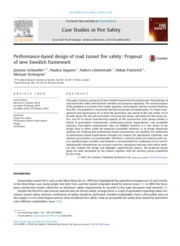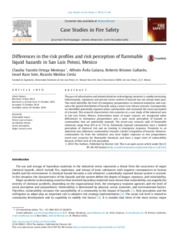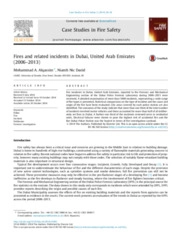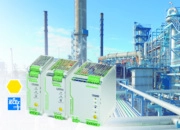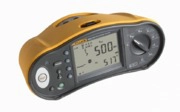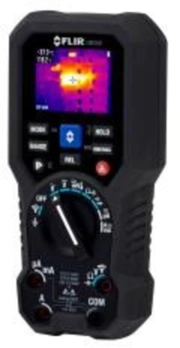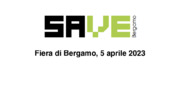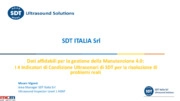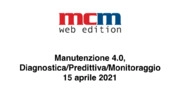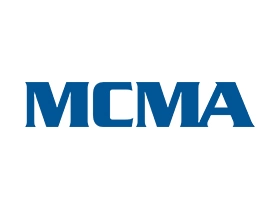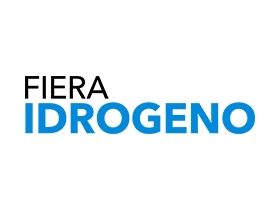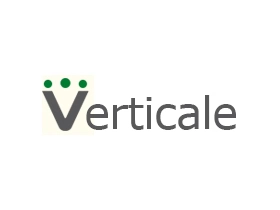L’impianto di affinamento di Gallipoli è del tipo convenzionale:
1. Miscelazione-flocculazione con policloruro di alluminio
2. Defosfatazione
3. Filtrazione dual-media a gravità
4. Debatterizzazione a raggi UV
Le membrane ceramiche, sono dei particolari filtri immersi in un depuratore, attraverso le quali è aspirata l’acqua purificata dopo un processo biologico. I pori delle membrane sono così piccoli che possono trattenere fanghi e batteri. Attraverso un trattamento efficace è possibile ottenere acqua debatterizzata che può essere riutilizzata per vari scopi.
Un sistema di gestione e trattamento delle acque meteoriche costituito da:
-Un pretrattamento per la rimozione delle componenti sedimentabili
-Un trattamento per la filtrazione delle componenti disciolte
-Una cisterna di accumulo per il riutilizzo dell’acqua filtrata
L’acqua in particolare verrà usata per bagnare i piazzali per ridurre la polverosità
Con Smart City View è possibile navigare attraverso il mondo virtuale in varie modalità:
- navigazione con fly camera, orbit camera, earth camera all’interno della nuvola di punti
- navigazione per foto orbitali
- camera car lungo il percorso di scansione
- navigazione in realtà aumentata su tablet grazie a GPS e accelerometro
Implementazione di un Sistema Informativo che consenta:
- il continuo aggiornamento dei dati derivanti dai sistemi di monitoraggio implementati;
- la costruzione di un quadro di riferimento dinamico ed omogeneo delle situazioni di erosione costiera in relazione alle attività antropiche;
- una visione coordinata e sistematica dei problemi emergenti anche in relazione al rapporto ambiente-protezione civile [derivante ad esempio dell’incrocio dei dati ambientali con quelli di incidenti verificati lungo la costa (esempio incidente causato dal crollo di una falesia dovuto allo scalzamento al piede per erosione marina)];
- l'individuazione di una serie di alternative possibili all'interno di un sistema di obiettivi coerenti e gerarchicamente ordinati;
- Re-roof
- Protezione dei sistemi impermeabili in membrane bituminose
- Patologie progettuali ed applicative
Un case di study di grande interesse e significatività per la valutazione dell’impatto energetico di un sistema KNX
Unica differenza introdotta è il sistema di controllo luci con KNX, gli apparecchi di illuminazione sono rimasti gli stessi.
Quindi il risparmio ottenuto:
- è dovuto solo all’introduzione del sistema KNX
- è misurabile in modo assolutamente preciso confrontando le “bollette” tra prima e dopo l’intervento
La microrete è in grado di funzionare in modalità gridconnected o stand-alone e, grazie ad un sistema SCADA/EMS, di controllare ed ottimizzare la produzione delle varie fonti.
• L’ attività di ricerca prevede:
– definizione ed implementazione nell’EMS di procedure di previsione, pianificazione del funzionamento e operatività in
tempo reale;
– monitoraggio e controllo dei dispositivi mediante controllori e attuatori locali, con funzioni di risposta in tempo reale degli inverter;
– test del funzionamento in isola con carichi simulati e reali;
– sviluppo di logiche di controllo dei sistemi di accumulo e veicoli
elettrici in configurazione Vehicle-to-Grid (V2G).
L’incendio può essere schematizzato come una sorta di bruciatore che rilascia calore (Heat Realease Rate - HRR), particolato (soot) e gas. L’ HRR rappresenta la “carta di identità” dell’incendio ed è il parametro di input principale per i software di simulazione degli incendi.
Il rischio di danno ambientale si intende efficacemente contrastato dalle misure antincendio connesse ai profili di rischio Rvita e Rbeni e delle applicazioni delle seguenti note aggiuntive
- separazione delle aree a rischio specifico dalle quali origina il rischio ambientale;
- prevenzione e sversamento in ambiente degli effluenti liquidi e solidi generati dall'incendio.
Dare uno strumento semplice all’utente per verificare che la manutenzione sia realmente effettuata secondo le leggi e norme vigenti. Mutuando l’esperienza Europea è stato creato il protocollo di Manutenzione di Qualità Certificata dei presidi antincendio.
Il servizio di manutezione solitamente è suddiviso in due settori: manutenzione impianti e manutenzione estintori e attrezzature antincendio. La gestione informatizzata del servizio, con uso di palmari e di PC, consente di monitorare in tempo reale lo stato di ogni impianto. Ogni tipologia d’impianto necessita di attrezzature specifiche di manutenzione. Le prove di funzionamento sono solo una parte delle verifiche che la manutenzione richiede. La presenza di attrezzature specifiche è determinante per il corretto svolgimento delle operazioni di manutenzione.
La certificazione PPG rappresenta una garanzia di autenticità e controllo lungo tutta la filiera.
Attesta la localizzazione delle fasi di assemblaggio e garantisce la provenienza geografica dei componenti critici e del prodotto finito nel rispetto degli standard qualitativi previsti nelle diverse fasi produttive.
Permette di attestare che il prodotto finito è assemblato in Italia o in un paese dell’Unione Europea con componenti di provenienza italiana o europea a garantendo agli utilizzatori e consumatori una scelta trasparente e informata
Rappresenta un metodo per combattere la «multinazionale del falso».
Prevenzione aziende:
• Valutazione del Rischio di Incendio - Esplosione;
• Piani di Emergenza ed Evacuazione;
• Sistemi di Gestione per la Sicurezza Antincendio;
• Fire Engineering;
• Fire Investigation;
Gli impianti antincendio, realizzati secondo “la regola dell’arte”, devono essere mantenuti efficienti nel tempo.
Una buona manutenzione è quindi un investimento continuo, in grado di garantire il “livello di sicurezza” progettato.
Il decreto disciplina la progettazione, la costruzione, l’esercizio e la manutenzione degli impianti di protezione attiva contro l’incendio, così come definiti nella regola tecnica allo stesso allegata, installati nelle attività soggette ai controlli di prevenzione incendi di cui al D.P.R. 151/2011. Rientrano nel campo di applicazione del decreto i prodotti regolamentati dalle disposizioni comunitarie applicabili ed a queste conformi.
Le tipologie di prodotti non regolamentati come sopra, possono essere impiegati nelle fattispecie di impianti, purchè legalmente fabbricati o commercializzati in uno degli Stati membri dell’Unione europea o in Turchia, o legalmente fabbricati in uno degli Stati firmatari dell’ Associazione Europea di Libero Scambio (EFTA).
D.M. 20.12.2012
L’installatore dell’impianto: predispone la documentazione tecnica ed il manuale d’uso e la consegna all’utilizzatore.
•Questo punto è importante per un corretto utilizzo dell’impianto antincendio e per la sua accurata manutenzione.
•L’installatore è infatti il “fornitore” del sistema e, nella legislazione vigente, è tenuto al rilascio del manuale d’uso e manutenzione.
•Le norme tecniche indicano anche loro la documentazione da rilasciare.
Consolidamento e impermeabilizzazione del terreno mediante jet grouting
Le attività normative in corso sia a livello nazionale che internazionale sugli impianti a rischio di incidente rilevante (RIR) e la pubblicazione della circolare Accredia sull’accreditamento nello schema RIR per il rilascio di certificazioni UNI 10617:2012, sono alcune delle principali novità che hanno portato all’elaborazione del presente dossier, un dossier che ha quindi l’obiettivo di illustrare e approfondire i contenuti normativi e legislativi in materia.
- L’evoluzione della direttiva Seveso e le norme tecniche nazionali a supporto
- Lo schema di accreditamento per il rilascio dei certificati UNI 10617:2012
- La gestione delle ispezioni e delle manutenzioni: la metodologia RBI
- La revisione della UNI/TS 11226:2007
(in lingua inglese)
Improved asphalt concrete air void characterization was demonstrated in this case study by the use of a 21 antenna GPR array system on an in-service pavement. Using the reflection amplitude, a dielectric map of the tested area was obtained. Analysis of the dielectric map allowed for logical selection of core locations to develop a relationship between dielectric values and air void content. While more field trials with additional cores are necessary for full implementation, initial analysis of this type of application shows the potential to provide benefits to road owners such as improved pavement quality and durability by providing complete coverage.
(in lingua inglese)
It has been demonstrated in this case study that very useful information can be obtained from automatic analysis of X-ray microCT scans of a casting. The simplest result is a stack of 2D slice images which provides a clear view of the inside of the part, especially for quick inspections of large numbers of parts. This requires no special software. Automated analyses include defect analysis, wall thickness analysis and part to CAD comparisons, which were demonstrated here. These automated analyses require high image quality and image artefacts affect the potential to apply these properly, which limits the size and density of the samples achievable for this type of analysis.
(in lingua inglese)
Optical frequency domain reflectometry (OFDR) is an appropriate technique for spatio-temporal temperature measurements during electromagnetic forming processes. In terms of a conservative process analysis or process monitoring, temperature measurements inside the coil body should be preferred to surface temperature measurements.
(in lingua inglese)
Accurate characterization of planar flaws, in terms of orientation and depth, was carried out using an approach combining a linear array and SAFT. The major advantages of this approach are: (i) a single channel instrument with multiplexer is sufficient for data acquisition, (ii) divergent sound beam because of small element size, and small pitch of an array, results in effective SAFT processing and (iii) no computation of focal laws is required, which is a must for conventional phased array.
(in lingua inglese)
In this paper, we presented a case study of guided wave propagation in a plate with one side immersed in water. With the acquisition of time–space wavefield and application of 2D FT, the frequency–wavenumber spectrum is obtained in which the wave modes and the dispersion relation can be discernibly viewed. The analysis also manifests the presence of guided wave modes as well as the quasi-Scholte wave mode in the one-sidedly immersed plate. Below 300 kHz, the quasi-Scholte mode dominates.
(in lingua inglese)
In this case study, ferromagnetic inclusions on aeroengine turbine disks have been investigated. Three high sensitive and low noise fluxgate magnetometers have been interconnected to a gradiometer second order to remove any magnetic background fields. This sensor is located above the turbine disk that rotates on a turn table. Depending on the orientation, size, position and elongation of the impurities, various signatures are obtained during the rotation. In order to solve the inverse problem – to gain information of the impurities based on the measured flux densities – the simulation results of different measurement configurations are stored in a catalogue.
(in lingua inglese)
• Resistance spot welding can be used to produce an acceptable quality of welded joints of steel sheet and closed profile.
• Ultrasonic method allows for non-destructive quality evaluation of welded joints of steel sheet of low thickness with closed profile.
• Studied joints of steel sheet with closed profile presented defects in the form of sticking (no remelting), despite the fact that connected elements did not have coating that protects them from corrosion
(in lingua inglese)
It has been shown that a very specific type of layered defect can be formed in laser AM metal parts, most likely due to imperfect melting in specific layers. These defects are present in a part with as little as 0.005% porosity, but can still be a problem if localized in a thin walled section and is hence of importance in material studies and non-destructive testing of high-performance parts. X-ray microCT seems to be the ideal tool to characterize this type of defect due to the defect size and geometry, though X-ray microCT could also be used to indicate where to physically section a sample for further analysis.
(in lingua inglese)
We developed and tested a non-destructive 3D acoustic coring system under the water bottom. A field test was conducted in a pond and the system worked without any problems arising. The measurement system can gather information under the water bottom and reconstruct the spatial status. The present study confirmed that the natural lotus root (diameter of 0.020–0.025 m) can be detected using the acoustic coring method. The measurement system is a versatile tool for the detection of lotus, the spread of which is an environmental problem in eutrophied lakes.
(in lingua inglese)
A practical demonstration of a large-scale active vibration system has been described in this article. Decentralized feedforward control was applied using four hydraulic actuators which were attached between a floating raft and a flexible hull-like structure. There were also eighteen rubber isolators in parallel with the actuators. Up to 36 dB reduction in the vibration of the hull-like structure was achieved at some tonal excitation frequencies, while the passive isolators were effective at controlling broadband vibration transmission, especially at high frequencies.
(in lingua inglese)
This paper presented a low cost throttle-less hydraulic circuit to control switching loads. The performance of the proposed circuit was tested using a test rig that was constructed using off-the-shelf industrial elements. Results showed that the position steady state error was less than 0.2 mm. Moreover, the cylinder end-effector exhibited good position tracking under a slow tracking signal. The circuit worked 5 times more efficient than a valve controlled circuit to follow the same tracking signal.
(in lingua inglese)
This case study presents a comparison between two methods for the detection of rotor bar faults in induction cage motors, validated and optimized. The first case uses FFT method and allows for the classical detection of broken bars based on the application of the Fourier transform to the stator current of an induction motor running in the steady state. Fault detection is achieved by studying the two sideband components (lower and upper) that appear around the supply frequency component. This classical approach has important advantages such as simplicity of data acquisition systems and required software, as well as robustness, and it has provided quite satisfactory results hitherto
(in lingua inglese)
The use of a robotics simulator for development of a robotics control program is highly recommended regardless of whether an actual robot is available or not. Because of this, a kinematic and dynamic model of a redundant robot with five degrees of freedom using the methods of Denavit–Hartenberg and Lagrange–Euler, respectively, was developed. Six controllers were made hyperbolic sine–cosine; computed torque; sliding hyperbolic mode; control with learning; and adaptive. A simulator was made using the MatLab/Simulink software. The tests of the manipulator model were presented, including the dynamics of the actuators and together with each controller, by following a test trajectory composed of a spiral in the Cartesian space.
(in lingua inglese)
The techniques used in this paper are typically used for applications where strong background noise masks the defect signature of interest within the measured vibration signature. Of all the techniques presented, the LMS algorithm succeeded
in detecting the bearing outer race fault earliest at 24% of bearing life. FBLMS technique detected the bearing outer race fault
at 27% of bearing life. In addition, the LMS algorithm was the only technique that successfully identified both the outer race
and ball spin faults. The SANC algorithm detected the fault at 30% of bearing life, though SANC showed its capability in
reducing the background noise and facilitating the identification of the different components in the signal spectrum.
(in lingua inglese)
To architects, contractors and building developers, it is recommended that advice be sought from a fire and life safety professional with specific experience in the design and commissioning of core protection systems in high-rise buildings. Challenge your design team to set out very clearly what restrictions and assumptions are inherent in the design if pressurization is being recommended and insist that alternative, performance based options be considered as well. The goal should be to seek out solutions which are integrated into the building design and reflect the building function and risks.
(in lingua inglese)
In order to quantify the potential delay to sprinkler activation caused by jet fans continuing to operate sixteen CFD analyses are undertaken to determine whether (i) it is significant and (ii) it detrimentally impacts upon the means of escape in the car park undertaken in a separate companion analysis (not presented here for brevity). The results of the analyses indicate delays of 630s to sprinkler activation where the sprinkler and jet fans layout was coordinated so the sprinklers are inplane with the jet fan nozzle. This does not significantly increase the hazard to occupants with the safety margin in the egress design being many times greater than this. Furthermore, the jet fans do not adversely affect the visibility in means of escape.
(in lingua inglese)
Fire behaviours of a furnished compartment room-burn carried out in Parkes were compared against numerical simulations and subsequent visualisations through FDS. Comparison of gas temperature demonstrated that FDS was shown to provide reasonable temperature and flow predictions if the pyrolysis and combustion rate of the fuel could be appropriately modelled. The phenomena of the spread of fire and smoke were successfully captured, including the spread of fire on the couch surface and burning of carpet induced by the radiation of hot gas layer. FDS simulations demonstrated a quicker and larger fire growth when compared to the observed fire scenarios and hence predicted earlier occurrence of flashover.
(in lingua inglese)
The idea of the tunnel guideline and Swedish building regulation is to let the designer choose which verification principle to use for each affected requirement. In the regulation this is achieved by presenting performance-based requirements together with acceptable solutions as recommendations. This means that one can either choose to implement the acceptable solution(s) to automatically fulfil the requirement, or one could engineer another solution using performance-based design to verify that the performance-based requirement is achieved. The advantage compared with current, more prescriptive, framework is that more efficient solutions taking account of actual risks and needs can be engineered.
(in lingua inglese)
Fire safety engineering is a great profession. We help safeguard society from destructive fire. But, while we have made great strides as a discipline, and we are enabling amazing structures to be built, in my opinion we still face challenges, including many associated with gaps in data and knowledge, variability in the application of FSE and the designs which result, and inadequate levels of education and lack of experience in key areas of the profession. We have accomplished much, but we can do significantly more.
(in lingua inglese)
In this study, the main elemental standards of risk management were evaluated to discover basic deficiencies in hazard control and risk communication. A consequence-based approach was used for classifying the level of protection posed by every facility, considering the degree of internal risk management. The population potentially exposed to chemical risks was evaluated using a social vulnerability methodology to identify chemical hazard awareness in the community. As a result, areas of prior concern were identified using a GIS.
(in lingua inglese)
There are on average two fires a day in Dubai and the aim of this study was to explore and analyse the available data relating to fires within the urban areas in Dubai. The fire statistics used included data relating to the total number of fire incidents which had occurred over an eight year period (2006–2013). The data was characterised by fire type, the affected community areas and the recorded cause of ignition. Statistics on fire costs can be gathered from insurance claims and such costs are usually high. It is clear that national codes must emphasise life safety and safer environments rather than focus primarily on property damage [20], and it is equally important to raise awareness of and provide education relating to fire prevention.
 English
English
